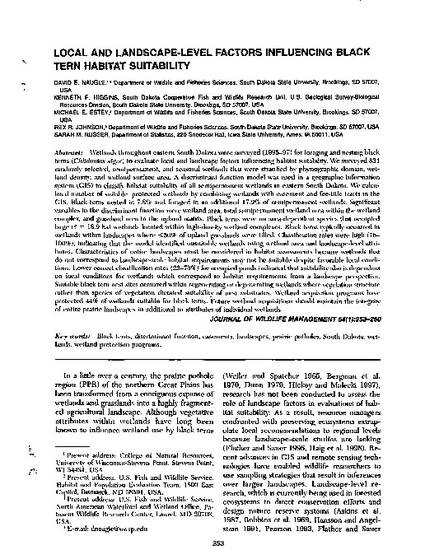
Wetlands throughout eastern South Dakota were surveyed (1995-97) for foraging and nesting black terns (Chlidonias niger) to evaluate local and landscape factors influencing habitat suitability. We surveyed 834 randomly selected, semipermanent, and seasonal wetlands that were stratified by physiographic domain, wetland density, and wetland surface area. A discriminant function model was used in a geographic information system (GIS) to classify habitat suitability of all semipermanent wetlands in eastern South Dakota. We calculated number of suitable, protected wetlands by combining wetlands with easement and fee-title tracts in the GIS. Black terns nested in 7.8% and foraged in an additional 17.9% of semipermanent wetlands. Significant variables in the discriminant function were wetland area, total semipermanent wetland area within the wetland complex, and grassland area in the upland matrix. Black terns were an area-dependent species that occupied large (x̄ = 18.9 ha) wetlands located within high-density wetland complexes. Black terns typically occurred in wetlands within landscapes where
Available at: http://works.bepress.com/sarah_nusser/3/

This article is from Journal of Wildlife Management 64 (2000): 253–260.